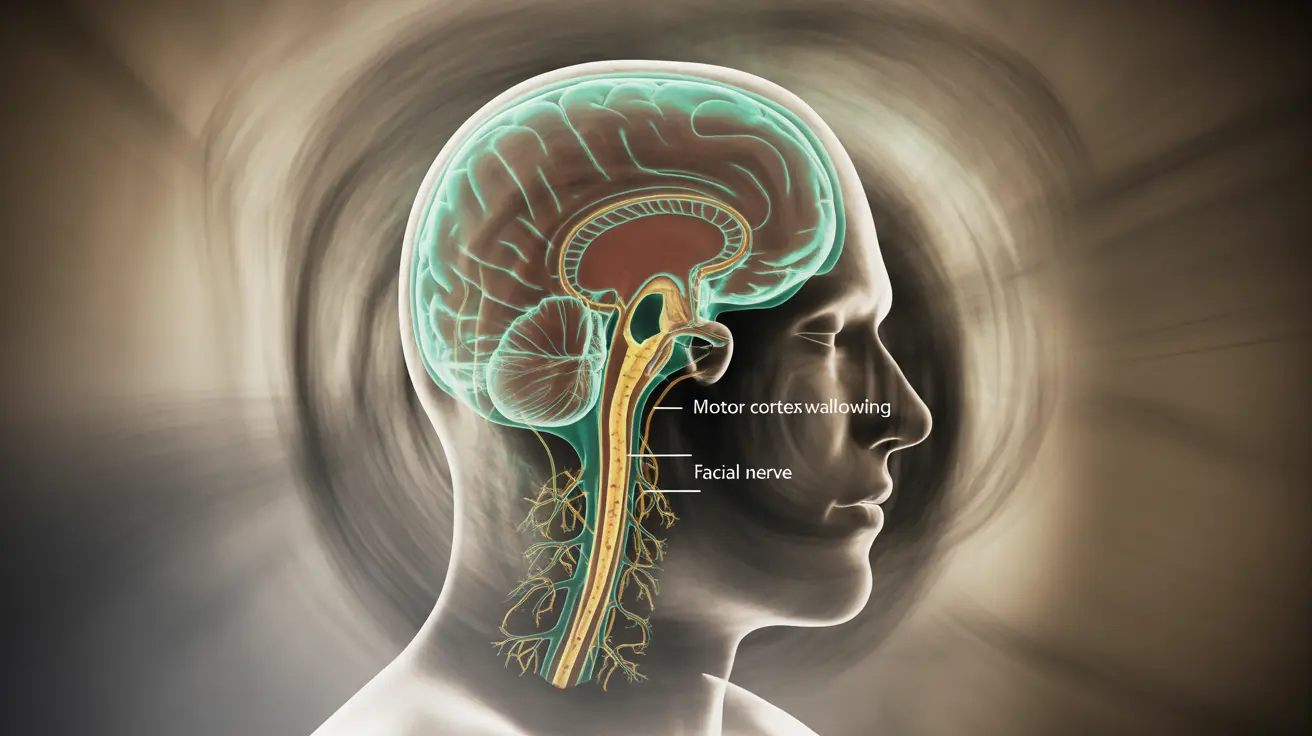Pseudobulbar palsy is a neurological condition that affects the way signals travel from the brain to the muscles controlling speech, swallowing, and facial expressions. This complex disorder can significantly impact a person's daily life, causing difficulties in communication and emotional expression. Understanding its symptoms, causes, and available treatments is crucial for both patients and caregivers.
While the name might sound technical, learning about pseudobulbar palsy helps patients and their families better navigate the challenges it presents and access appropriate care. This comprehensive guide will explore what you need to know about this condition, from its fundamental characteristics to management strategies.
What Is Pseudobulbar Palsy?
Pseudobulbar palsy occurs when there's damage to the neural pathways between the brain and the lower cranial nerves. Unlike bulbar palsy, which affects the brainstem directly, pseudobulbar palsy involves problems with the signals traveling from the brain to the bulbar muscles. This distinction is important because it affects both diagnosis and treatment approaches.
The condition specifically impacts the upper motor neurons, which are responsible for voluntary muscle control. When these neurons are damaged, it leads to various symptoms affecting speech, swallowing, and emotional control.
Common Symptoms and Signs
People with pseudobulbar palsy typically experience several characteristic symptoms:
- Difficulty speaking (dysarthria)
- Problems with swallowing (dysphagia)
- Inappropriate laughing or crying (emotional lability)
- Increased jaw jerk reflex
- Weakened tongue movements
- Enhanced gag reflex
- Facial muscle weakness
One of the most distinctive features is pseudobulbar affect (PBA), where individuals experience uncontrollable episodes of laughing or crying that don't match their actual emotional state.
Causes and Risk Factors
Several neurological conditions and events can lead to pseudobulbar palsy:
- Stroke (especially multiple strokes)
- Multiple sclerosis
- Amyotrophic lateral sclerosis (ALS)
- Traumatic brain injury
- Brain tumors
- Cerebral palsy
- Neurodegenerative diseases
The risk of developing pseudobulbar palsy increases with age and in people with a history of neurological conditions or brain injuries.
Diagnosis Process
Diagnosing pseudobulbar palsy involves several steps and tests:
- Detailed medical history review
- Physical and neurological examination
- Assessment of speech and swallowing functions
- Brain imaging (MRI or CT scans)
- Evaluation of reflexes and muscle strength
- Testing for associated neurological conditions
Doctors must carefully differentiate between pseudobulbar palsy and other similar conditions to ensure appropriate treatment.
Treatment Approaches
Treatment for pseudobulbar palsy typically involves a multi-faceted approach:
Medication Management
Several medications can help manage symptoms, particularly for emotional lability and pseudobulbar affect. These might include antidepressants or specific medications designed to treat PBA.
Therapeutic Interventions
Various therapies play crucial roles in managing symptoms:
- Speech therapy for communication difficulties
- Swallowing therapy to improve eating safety
- Physical therapy for muscle strength
- Occupational therapy for daily activities
- Psychological support for emotional challenges
Lifestyle Modifications
Making certain lifestyle changes can help manage symptoms:
- Dietary modifications for easier swallowing
- Using adaptive devices for eating and drinking
- Implementing communication strategies
- Creating a supportive home environment
Frequently Asked Questions
- What does "pseudobulbar palsy" mean, and how is it different from bulbar palsy?
Pseudobulbar palsy affects the neural pathways between the brain and lower cranial nerves, while bulbar palsy directly affects the brainstem. The term "pseudo" indicates that the primary problem lies in the signal transmission rather than the bulbar region itself.
- What are the main symptoms of pseudobulbar palsy, and what does it feel like to live with this condition?
The main symptoms include difficulty speaking and swallowing, uncontrollable emotional expressions, enhanced reflexes, and facial muscle weakness. Living with the condition can be challenging, particularly due to communication difficulties and emotional control issues.
- What causes pseudobulbar palsy, and who is most at risk for developing it?
The condition is typically caused by damage to upper motor neurons from conditions like stroke, MS, ALS, or brain injury. Those at highest risk include older adults and individuals with existing neurological conditions.
- How do doctors diagnose pseudobulbar palsy, and what tests are usually needed?
Diagnosis involves neurological examinations, brain imaging (MRI/CT scans), assessment of reflexes, and evaluation of speech and swallowing functions. Doctors also review medical history and perform tests to rule out other conditions.
- What are the current treatment options for pseudobulbar palsy, and how can symptoms like speech and swallowing problems be managed?
Treatment options include medications for emotional symptoms, speech and swallowing therapy, physical therapy, and occupational therapy. Management also involves lifestyle modifications and the use of adaptive devices to help with daily activities.




